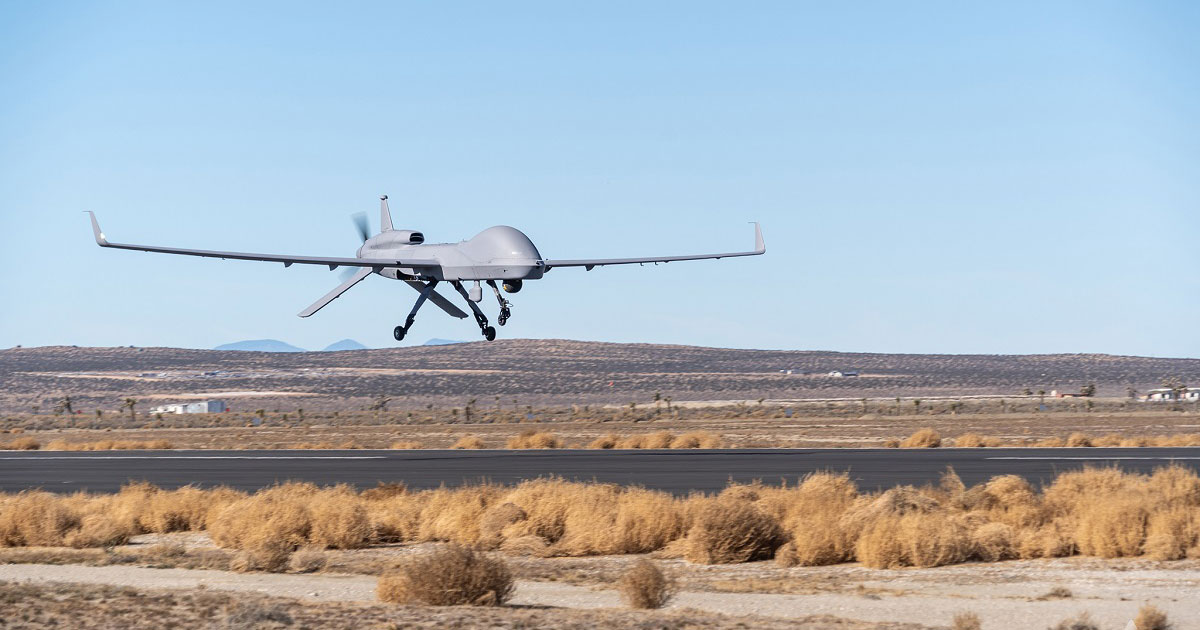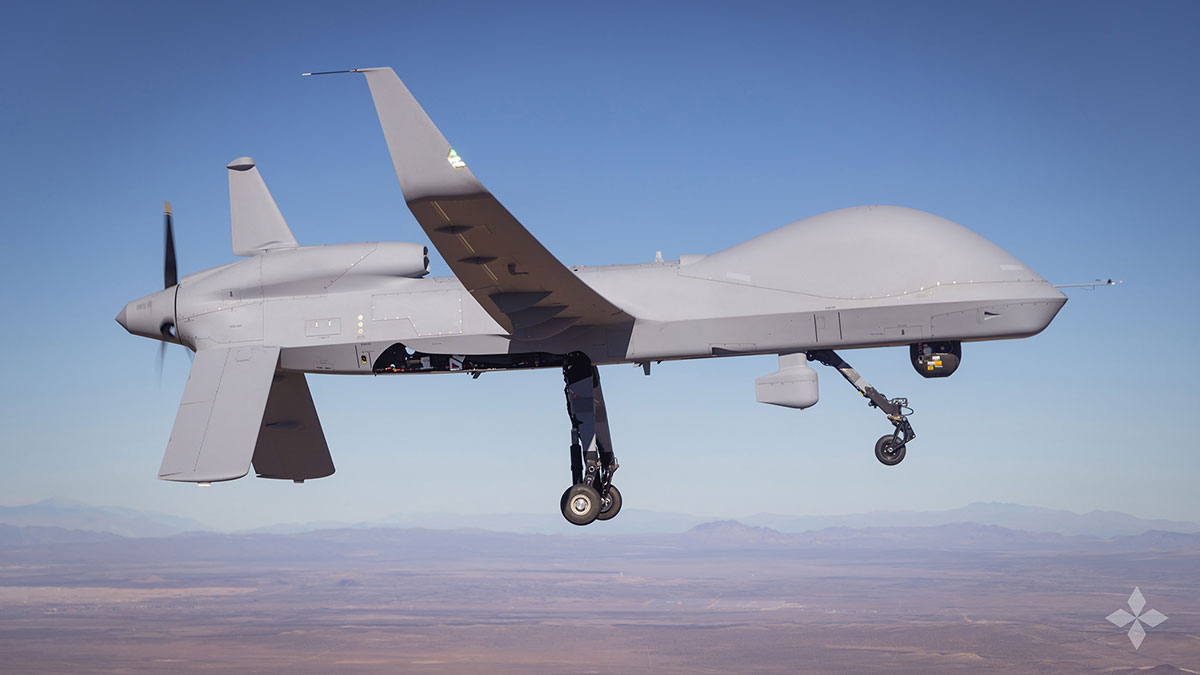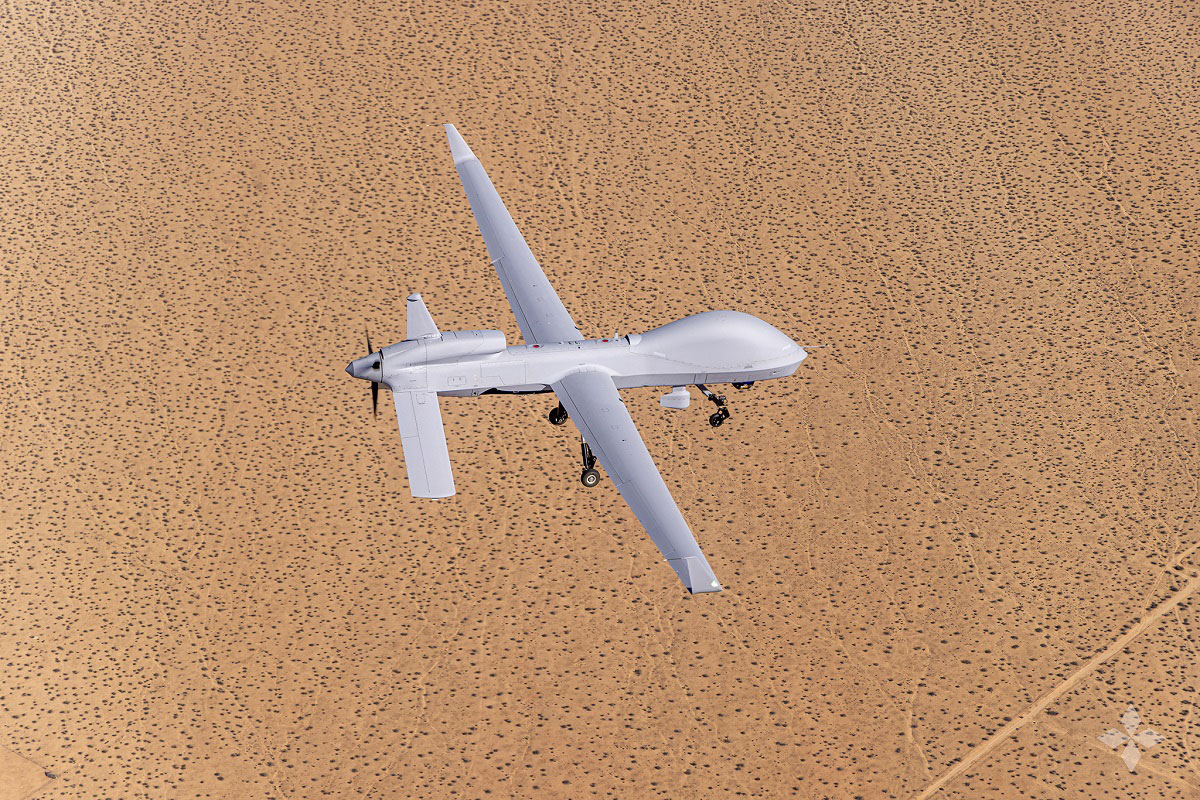
Army National Guard Brings New Gray Eagle MDO to States and Infantry Divisions
The addition of Gray Eagle® 25Ms will make the ARNG the reserve fighting force the U.S. Army needs to deploy as a component of an active Army task force or as an organic element of its National Guard Division – supporting the National Defense Strategy.
When you think of who’s employing the world’s most advanced uncrewed aerial systems (UAS) technology, you might not think of the Army National Guard. Think again.
As many as 60 next-generation medium altitude, long endurance multi-mission uncrewed aircraft are either funded or pending funding and slated to deploy with Guard units operating alongside the active-duty Army in theaters across the globe starting within two years.
The first of 12 Gray Eagle® 25M aircraft, which Congress funded in the 2023 budget, are on track to begin deliveries in 2027. That means that the Army National Guard is well on its way toward fielding the world’s most advanced UAS in its class.

“Gray Eagles provide persistent presence at operationally relevant ranges for sensors, payloads, and launched effects while requiring no risk of our U.S. soldiers,” said Denny Winningham, a retired colonel of the Army National Guard’s 1st Battalion, 285th Aviation Regiment, who now works for aircraft-builder General Atomics Aeronautical Systems Inc. (GA-ASI). “When we operate, we put Gray Eagle 25M in danger, not a human pilot and crew.”
Although Gray Eagle 25M was based on the Army’s existing Gray Eagle aircraft – reducing the risk, cost and time required as compared with a fully new aircraft – it brings major new capabilities. So much so that the Army National Guard units that will fly it will be able to do things no others can, anywhere.
“The new 25M model delivers the only relevant multi-domain operations capability available now and will sustain the Army National Guard as a relevant and reliable partner for active-duty divisions and cement the ARNG as the world’s premier combat reserve.”
In addition to the first 12 funded in 2023, supporters have advocated for another dozen to be funded in the 2025 budget and a further 36 aircraft systems in 2026.
The 2025 funding would be dedicated for the 40th Infantry Division, comprising units from California, Oregon, and Nevada. The 2026 funding is slated for the 28th Infantry Division (comprising units from Pennsylvania, West Virginia, and Tennessee), the 35th Infantry Division (with units from Kansas, Arkansas, and Oklahoma), and 36th Infantry Division (with units from Texas and Mississippi).
Ready for Great Power Competition
The new Gray Eagle 25M model delivers the only relevant multi-domain operations capability available now and will sustain the Army National Guard as a relevant and reliable partner for active-duty divisions and cement the ARNG as the world's premier combat reserve.
Denny “Lee” Winningham, GA-ASI
Gray Eagle is one of the few multi-echelon, multi-role systems in the Army, providing commanders with essential information, protection from attack, and exquisite intelligence in all phases of conflict. These capabilities for kinetic and non-kinetic effects are well documented in conflicts such as Operation Enduring Freedom and Operation Iraqi Freedom.
The 25M variant brings these capabilities to the next level, making sure Gray Eagle is ready for conflict with near-peer adversaries. Put plainly: The Gray Eagle 25M gives commanders the range, endurance, and persistent reconnaissance that today’s threats in the Pacific demand.
Gray Eagle 25M’s upgrades include:
- Anti-Jam GPS
- Anti-Jam SATCOM
- The new EagleEye® multi-mode synthetic aperture radar to track and target through clouds
- Electro-optical/infrared sensors
- Modular design capable of hosting a wide range of kinetic and non-kinetic payloads
The system is designed to support the Army National Guard’s role in multi-domain operations by delivering to the Guard an organic Divisional Reconnaissance, Surveillance, and Target Acquisition (RSTA) capability for the first time.
The Guard’s Gray Eagle 25Ms are therefore critical to making ARNG Divisions deployable across the spectrum of operations and ensuring the Guard can execute the Army’s Doctrine of “no blood in first contact.”
‘Tireless advocates’
Momentum for fielding the 25M is the result of the efforts of the National Guard Association of the United States, or NGAUS, which has long been an advocate for the proper manning, training and equipping of the National Guard.

NGAUS works with states to ensure there is a credible capability to deter or respond to threats at home and overseas, driving the urgent need to fully equip the broader ARNG Infantry Divisions with the latest version of Gray Eagles.
General Atomics is working with NGAUS to respond to requests for information from the states’ staff, offering technical and operational expertise. With each division encompassing multiple states, GA-ASI, in coordination with NGAUS, jumps in and assists throughout the congressional funding process to support the State Guards.
“NGAUS has done incredible work raising awareness about the need for this program to move forward, as it does for any number of capabilities the Guard needs to perform its mission in the face of 21st century threats,” Winningham said.
“They’re tireless advocates for our National Guard’s men and women and working alongside them to get this program where it is today has been an honor.”
With the acquisition of 25M, the Army National Guard has become a change and innovation leader in the field of unmanned aerial systems, achieving multiple firsts related to new sensors and operational concepts like runway-independent operations.
The ARNG is continuing the lead-not-follow model for the Gray Eagle 25M, pressing for the most modern and capable unmanned aerial system available.
Gray Eagle is already an integral part of the Army Aviation team. Now, with the Guard’s 25M variants slated to join the fight while working closely with manned rotary-wing systems, the Army is on track to achieve overmatch against pacing threats.
“It’s a very exciting time,” said Winningham. “I congratulate the Guard for their foresight in procuring these aircraft and for their commitment to our national defense.”